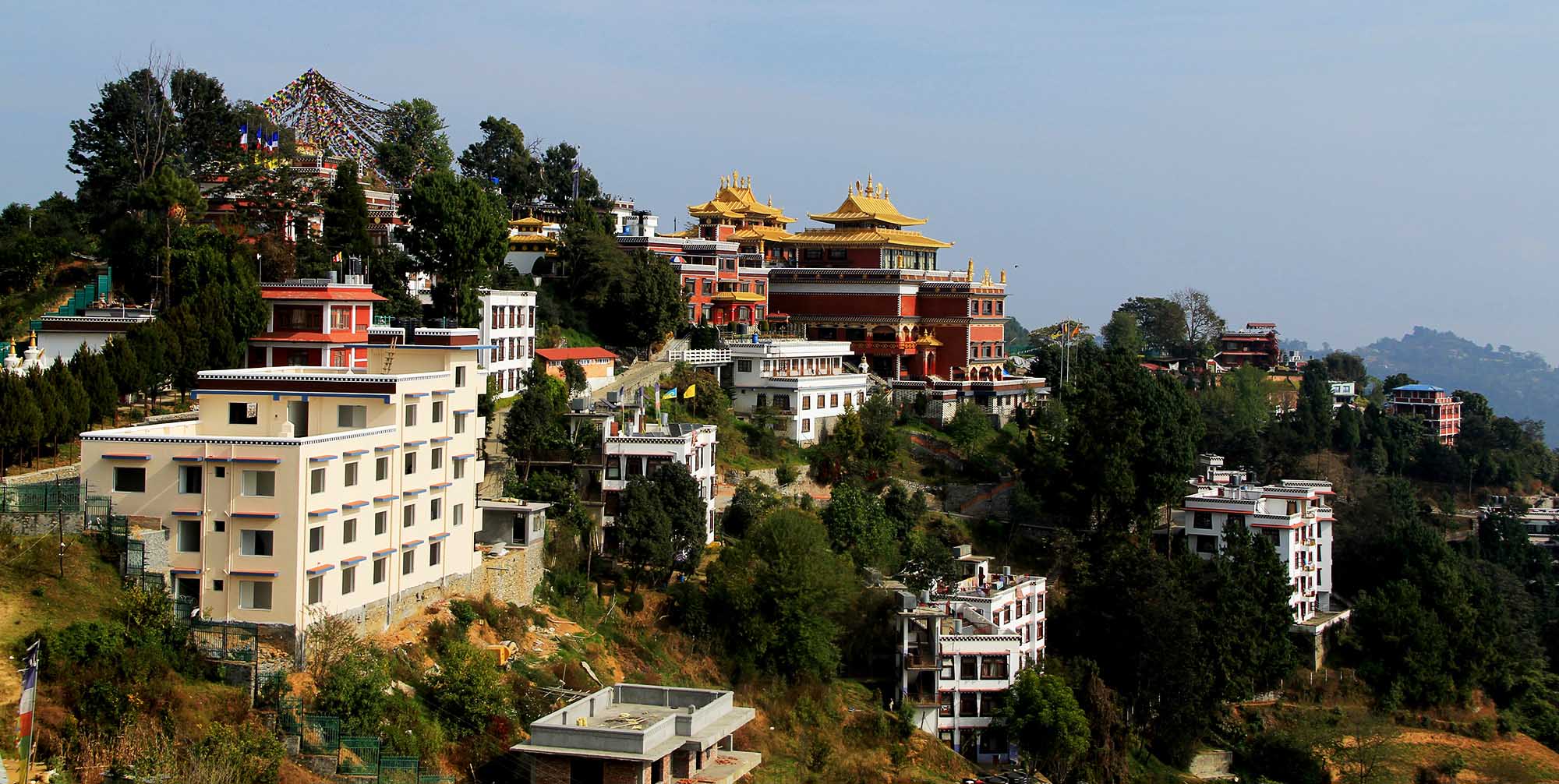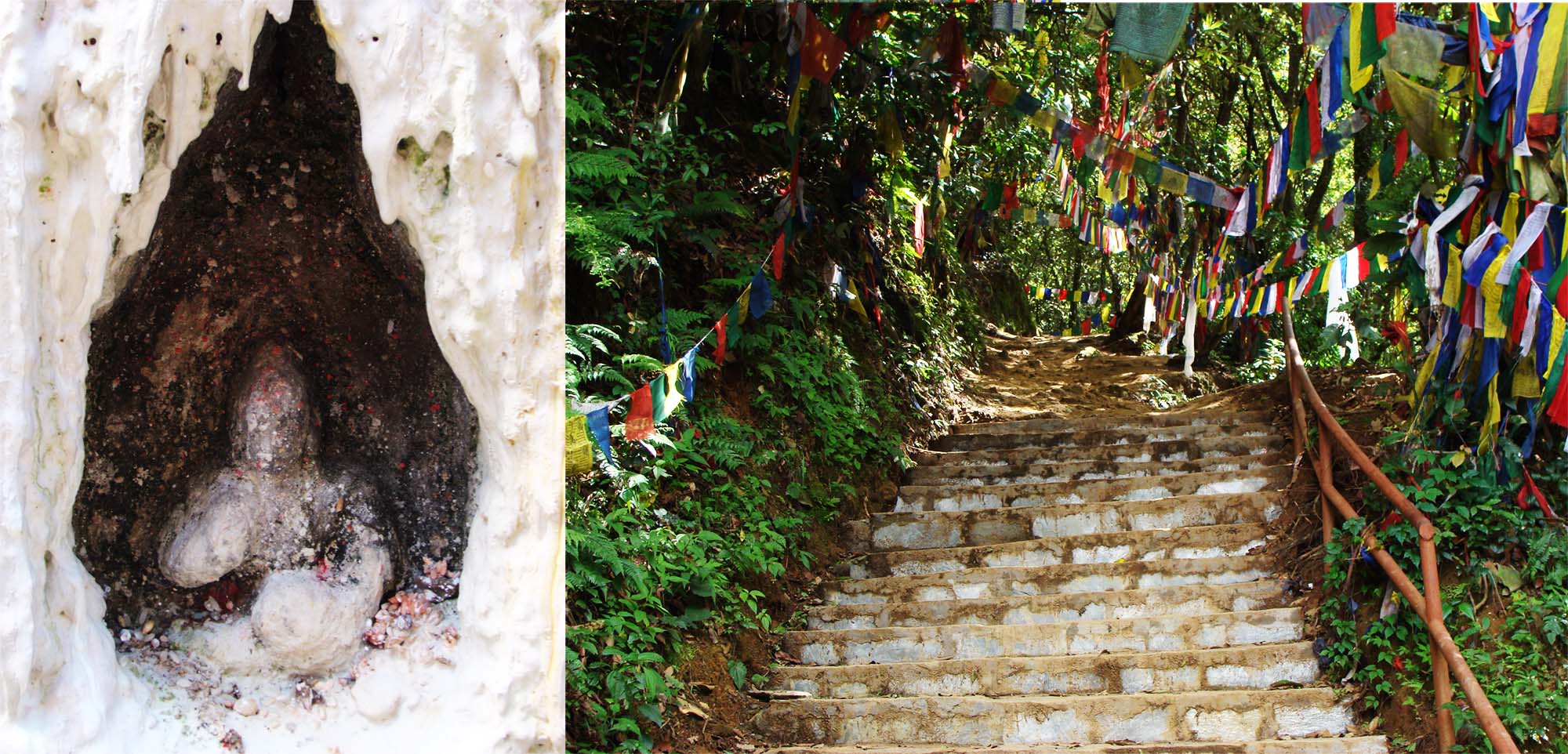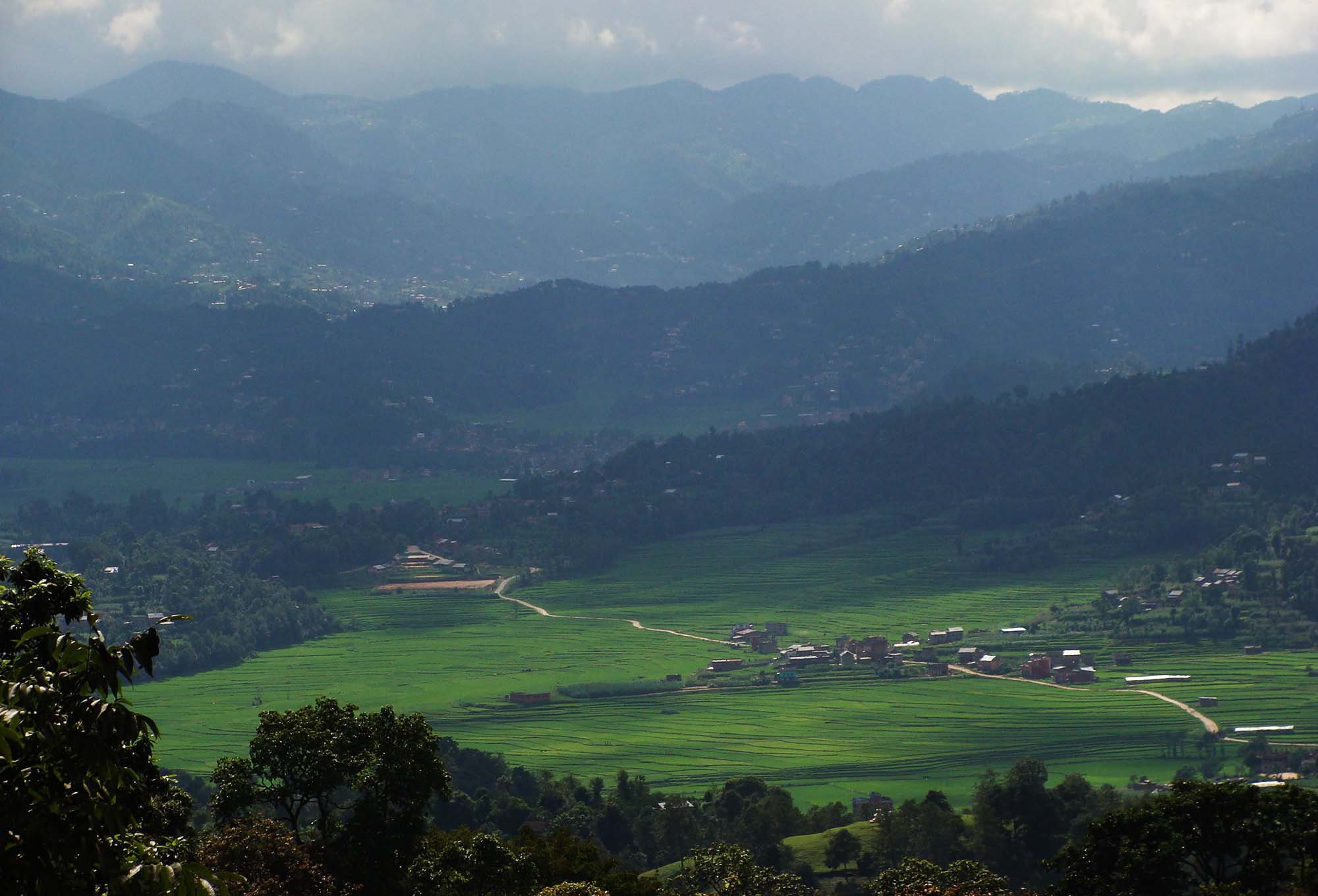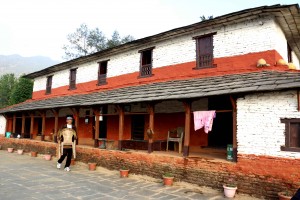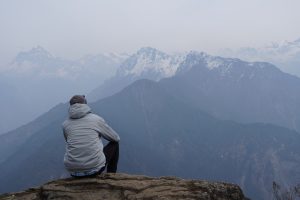The meeting would have made for a wonderful painting.
My companion and I ran into two Buddhist monks, stopped for a brief chat, and parted ways; we towards a monastery and the monks on their way to the febrile city.
In the background to this coming together of tonsured monks in burgundy robes and hikers in quick-dry T-shirts was a large monastery of golden roofs and curly eaves perched on a hill. There was a certain amount of romanticism, I felt, in meeting monks on your way to a monastery mentioned in holy texts. And that was why I felt like being in a classic painting about a pilgrimage.
That was our first glimpse of the monastery at Namo Buddha. It was in Namo Buddha, according of legend, that a young prince had been so moved by the sight of a hungry tigress, about to devour her own famished cubs, that he fed them his own flesh and eventually gave himself to the tigress.
Though this tale of compassion inspired people to travel here for pilgrimage, they could not shake off their fears of wild animals inhabiting the dense forest. So to allay their fears, pilgrims began chanting “Namo Buddhaya,” a mantra meaning “I take refuge in the Buddha,” while traveling through the forest. That is how the place got its name.
The monastery and its surroundings serve as a buffer zone against the distractions of the world—at least the visual ones. Photo: Wikimedia Commons. (Opener) Prayer flags strewn at the monastery premise. Photo: Chany Crystal/Flickr
I had heard from friends that a lama I had known was now living in the monastery. When I inquired about the lama, however, I learned that he had been in retreat for two years already and would be for another two. My companion and I decided to look around.
It became clear quickly why the lama had gone on a retreat. The monastery and its surroundings were like a buffer zone against the distractions of the world—at least the visual ones. The website of the Thrangu Tashi Yangtse Monastery extols Namo Buddha as a place that “inspires one’s faith; renunciation and weariness with samsara naturally arise.”
It didn’t inspire that kind of feeling in me, but like any quiet place set in the midst of unspoiled natural beauty, it did remind me of the need to escape more often from the samsara of concrete structures. I was hooked more to the copper-blue of a verditer flycatcher, which made sorties from its perch on an electric wire to grab insects.
We then climbed the stairs to the main prayer room. On the wall along the stairs were plaques inscribed with the aphorisms of one of the world’s happiest man, the Dalai Lama. Of forgiveness, a word that he has spent a lifetime trying to prove is more than a mere ideal, he had said:
It would be much more constructive if people tried to understand their supposed enemies. Learning to forgive is much more useful than merely picking up a stone and throwing it at the object of one’s anger, the more so when the provocation is extreme for it is under the greatest adversity that there exists the greatest potential for doing good, both for oneself and others.
The words took me to some place higher—if only for the duration of the seconds it took me to read them.
The stairs brought us to a red door with minute colorful patterns on its frame. From inside came the clang of cymbals and the thud of drums, accompanied by the guttural chanting of Buddhist scriptures. A prayer session was underway.
Visitors were welcome here. A couple of tourists were seated on a low bench, some of them turning prayer beads in their hands, other transfixed by the sounds and sights of a monastery prayer room. We found seats behind a row of monks poring over scriptures. Two monks appeared a little later, one carrying a large kettle, the other placing clay cups before monks and visitors. The tea had a scorched taste, and it blended with the earthy taste of the cup to produce a memorable flavor.
On the monastery premises. Photos: Author
We left the room after a while of listening to the chanting and page turning. From the large balcony, too, the landscape was of the paintings one sees in shops in Kathmandu: snowy mountains, verdant valleys, endless rows of hills, terraces bristling with corn plants and villages of thatch-roofed houses.
We watched the distant hills with their wreaths of fog; nearer, the hills were smothered in prayer flags, the incantations fluttering away to the heavens on a cool mountain breeze. Then we went on a kora around the monastery, which had the odd feel of a guided tour.
We came down to the other side of the monastery and went into a dark hallway. On one side of this passage was a door with several dozen shoes and flip-flops outside—another prayer session. We found a secluded balcony. There, lulled by the cool wind, the zealous chants of novice monks and a quiet that is common in monasteries, we fell asleep, me with an open book in my lap, the proverbial lazy student.
When we awoke, both of us were a little embarrassed at having succumbed to sleep in a place associated with awakenings. What was it that had induced sleep in a place where one tries to keep the senses awake for any spiritual windfall? For us the place was a true gompa, a Tibetan word meaning “remote place,” for it actually isolated us from all worldly cares. That is perhaps the power of a sacred place, to screen out the commotion of the outer world so that people may focus on their inner landscape. Besides, as the monastery’s website states (and consoles lazy folks like me):
“In the supreme place of a solitary mountain retreat, any activity is virtuous.”
Checklist
A verdant landscape surrounds the monastery. Photo: Author
Getting There

To get to Namo Buddha, take a bus to Dhulikhel from the Old Bus Park. From there you can either take the buses that go all the way up to the monastery or to the junction from where the road to the monastery branches off. If you have taken the latter option, you will need to walk up from the junction to the monastery. The thing to remember is to inquire about the last bus down from Namo Buddha.
Meal with Monks

The Thrangu Tashi Yangtse Monastery offers chance to spend some time with its resident monks outside the prayer rooms. At the monastery’s restaurant you can eat your meals with the monks. The monastery also has a guesthouse. But it is usually full, so it’s always best to book rooms in advance if you plan to stay overnight. To make reservations, visit www.namobuddha.org.
Where to Stay

There are several lodges at the foot of the Namo Buddha hill, near the old stupa. Lodges and teahouses also abound on the road up to the monastery. There are also some small villages on this route. It’s worth inquiring about homestay facilities there.
Side Trips

A short hike west from Namo Buddha is the medieval town of Panauti. The town is one of the few places remaining in the Kathmandu Valley that had managed to salvage its character and lifestyle in the face of modernizations. It’s a must see if you are into medieval history and culture. Those capable of long walks may want to return to Kathmandu via Lakuri Bhanjhyang, a village on the southeastern rim of the Valley.
***
Also read



